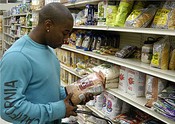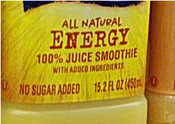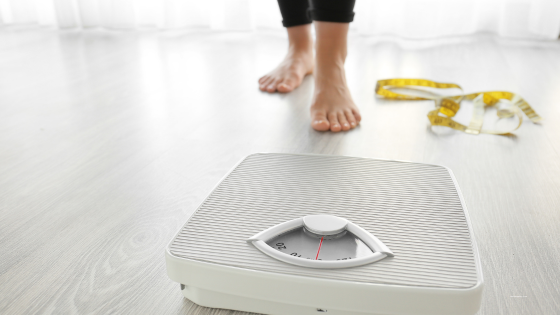 Energy is a big part of everyone’s day. We need energy to be more productive in just about every aspect of living, including work, school, family and friends, church, community, and workaround our homes. Our personal exercise also requires energy. Some of us may need extra energy just to get ready to go to the gym, while others only need it to sustain us through our workouts. But how does one go about increasing energy for a productive, efficient workout? Diet is a great starting point.
Energy is a big part of everyone’s day. We need energy to be more productive in just about every aspect of living, including work, school, family and friends, church, community, and workaround our homes. Our personal exercise also requires energy. Some of us may need extra energy just to get ready to go to the gym, while others only need it to sustain us through our workouts. But how does one go about increasing energy for a productive, efficient workout? Diet is a great starting point.
The foods we eat play a crucial role in everything we do. They contribute to how well we meet our health goals on a daily, short-term and long-term basis: concentration, mental clarity, weight loss, muscle/strength gain, craving control, disease cure/prevention, and finally, energy production. The foods we choose determine this, along with when we eat and in what amounts. Meal timing and portion control become important, as well, and are two of the key points in eating for energy.
What to Eat
Unfortunately, in today’s world of fast-paced living, prolonged work hours and the age of convenience, most Americans choose the worst foods to get them through their busy days. In addition, the media and commercials portray certain foods as “healthy” when they are far from it. It is our job to take action and take control of our own health, because no one will do it for us. Taking care of the body God gave us is one of our responsibilities as a good steward of what he has given us. We need to educate ourselves on proper nutrition and how to identify it in a food by reading labels and knowing which foods are nutritious and which are detrimental to our health and well being.
First, whenever possible, choose fresh, natural foods as the staple of your nutrition plan. This is easy – if it comes out of the ground or from an animal, it’s OK! Getting these foods fresh and unaltered is the key. Once they’ve had their nutrients removed, preservatives added, and tons of flavoring in the forms of sugars, salt and unhealthy fats, they’ve become an “unhealthy” food. Your best bet? Buy produce fresh or frozen. Believe it or not, most frozen foods are fresher because they are flash-frozen at their freshness peak, locking in flavor and nutrients.
As for meats, buy fresh or frozen lean cuts without skin or excess fat and with minimal added sodium. When you buy foods like this, you have the option of preparing them any way you wish, and flavoring them with your favorite herbs and spices.
Finally, choose whole grain and complex carbohydrates such as brown rice, sweet potatoes, red potatoes, beans/legumes, oats, wheat pasta, and whole grain breads. Refined, bleached carbohydrates such as white bread, white rice, pasta, cereals and pastries are one of the worst food categories for health, fitness and energy. Some of these foods, such as rice and pasta, don’t necessarily have added sugars in them, but the breakdown of starch into sugar causes one’s blood sugar to fluctuate, which leads to weight gain, decreased energy, and ultimately leads to diseases such as diabetes, cancer, and hypertension.
Carbohydrates, Blood Sugar And Insulin
 Carbohydrates are our bodies’ primary source of energy and are the easiest food source to use. All carbs are broken down into glucose, the body’s energy source. Depending on how quickly and easily those foods break down determines whether they are classified as more complex or more simple. Complex foods take longer to digest and utilize, while simple carbs break down faster and easier. What does this mean? Well, when the food is broken down and used by the body, the glucose is absorbed by the small intestine. With simple carbs, the absorption is very quick and responsive. The brain reads this and, in turn, insulin is released by the pancreas to shuttle the blood sugar (energy) where it is most needed. But, if it is not needed due to excess consumption, it has nowhere to go, and it then gets converted by the liver to triglycerides – body fat! But that’s not all. There is still insulin present in the blood stream, and as mentioned earlier, its job is to shuttle blood sugar to the body and the liver. The insulin will continue this process until your blood sugar is then on the opposite end of the spectrum – too low. This leads to feelings of shakiness, weakness, and hunger – even minutes after eating! This typical “blood sugar crash” is the main enemy that clashes with one’s goals of health and fitness, and the main goal of this article – effective energy production. So, you can see how important it is to limit refined carbohydrates and opt for more complex sources, such as the whole grain and complex sources mentioned above.
Carbohydrates are our bodies’ primary source of energy and are the easiest food source to use. All carbs are broken down into glucose, the body’s energy source. Depending on how quickly and easily those foods break down determines whether they are classified as more complex or more simple. Complex foods take longer to digest and utilize, while simple carbs break down faster and easier. What does this mean? Well, when the food is broken down and used by the body, the glucose is absorbed by the small intestine. With simple carbs, the absorption is very quick and responsive. The brain reads this and, in turn, insulin is released by the pancreas to shuttle the blood sugar (energy) where it is most needed. But, if it is not needed due to excess consumption, it has nowhere to go, and it then gets converted by the liver to triglycerides – body fat! But that’s not all. There is still insulin present in the blood stream, and as mentioned earlier, its job is to shuttle blood sugar to the body and the liver. The insulin will continue this process until your blood sugar is then on the opposite end of the spectrum – too low. This leads to feelings of shakiness, weakness, and hunger – even minutes after eating! This typical “blood sugar crash” is the main enemy that clashes with one’s goals of health and fitness, and the main goal of this article – effective energy production. So, you can see how important it is to limit refined carbohydrates and opt for more complex sources, such as the whole grain and complex sources mentioned above.
Complex (oligosaccharides and polysaccharides) should make up the bulk of your diet. They include whole grains, and vegetables. Simple (monosaccharides and disaccharides) sugars are digested quickly and cause a large spike in blood sugar. In most cases this is bad for those wishing to lose weight and avoid blood sugar disorders, such as diabetes.
When To Eat
Now that you know what to eat, we’ll discuss nutrient timing, or when to eat. Complex carbohydrates, which as we now know, give us most of our energy, should be eaten at times when we need the most energy. Those two main times are first thing in the morning and at the meal prior to working out. Upon waking, our bodies’ energy stores have been mostly used up and we haven’t eaten anything in 8-10 hours, so it’s time to refuel. Great breakfast choices are plain oats, cream of wheat/rice, or whole grain bread. Pair this with a lean protein source such as egg whites or a protein shake, and you have a healthy, energizing meal to get you through your morning. Pre-workout is an important meal, as well. Naturally, you want energy for your workout, so eating an energizing food beforehand makes total sense. A great choice would be a small chicken breast with steamed veggies and a side of brown rice. Just make sure you eat it soon enough before you workout for the food to digest and be utilized, not still be sitting in your stomach (about 1.5-2 hours).
Your other meals throughout the day don’t necessarily need to contain many complex carbohydrates, so they can consist of a lean meat and vegetables. A big salad topped with grilled chicken breast, tomatoes, cucumbers, and low-fat vinaigrette is a great lunch or mid-day meal. Between major meals, opt for healthy, energizing snacks, such as a piece of fruit with some low-fat cheese or a small handful of nuts, a container of low-sugar yogurt or low-fat cottage cheese, or even a protein bar or shake. Ultimately, eating every 3-4 hours will keep your blood sugar stable and will give you a constant, “IV drip” of food to keep you fueled and energized all day long.
Our bodies tend to slow down towards the end of the day, and are less effective at using and burning excess carbohydrates and fats. Because of this, the evening meals and snacks should consist of low-fat meat and protein sources and limit carbohydrate-dense foods like oats and brown rice. Good evening meals are a turkey burger with a side of vegetables, a protein shake, or a large salad topped with a lean meat such as tuna. However, if you workout at night then eating those carbs pre-workout is a necessity.
How Much To Eat
 So now we know when and what to eat, but, how much? Many of us don’t have the time or desire to weigh and measure food portions. The good news is there are several solutions to this! One is to estimate food portions with common items found around the house. Note that for this foods list, a starch is defined as a complex carbohydrate not including low-calorie, fibrous vegetables (i.e. brown rice, sweet potato, wheat pasta). A non-starch would then be the opposite – green, leafy vegetables low in calories, rich in nutrients and high in fiber (i.e. spinach, asparagus, broccoli). Here’s a quick list:
So now we know when and what to eat, but, how much? Many of us don’t have the time or desire to weigh and measure food portions. The good news is there are several solutions to this! One is to estimate food portions with common items found around the house. Note that for this foods list, a starch is defined as a complex carbohydrate not including low-calorie, fibrous vegetables (i.e. brown rice, sweet potato, wheat pasta). A non-starch would then be the opposite – green, leafy vegetables low in calories, rich in nutrients and high in fiber (i.e. spinach, asparagus, broccoli). Here’s a quick list:
Hockey Puck – 1 serving starch
Deck of Cards – 1 serving meat
Baseball – 1 serving fruit
Tip of Thumb – 1 serving fat (i.e. butter)
Softball – 1 serving non-starch vegetable
Another solution is to package/serve your food in/on smaller sized dishware. This forces you to employ portion control without having to guess. Use a small or medium-sized dinner plate, and divide it into three parts:
Part 1 – 2/3 – Non-starch vegetable
Part 2 – 1/3 – Meat
Part 3 – 1/3 – Starch
If you are packing your meal to take to work or on-the-go, use a small plastic container that only holds 2-2.5 cups. Fill most of it with your non-starch vegetable, use the deck of cards to estimate your meat, and fill the remaining space with your starch source.
In addition to portion sizes, you have to consider how many meals to eat. This depends on how long you are awake, when you wake up and when you go to sleep. You should eat breakfast within 1 hour of waking to break your evening fast and keep blood sugars stable, and of course for energy. Your last meal of the day should be eaten about 1.5-2 hours before bed. Between the first and last meal, eat a meal or snack every 3-4 hours. This determines your number of meals per day, which usually ends up as a total of six. Divide this into 3 meals and 3 snacks, and you have your eating plan for the day.
Ok, we figure even though that sounds easy enough (or not) you may be more successful at creating and sticking to your own personal eating plan if we gave you a simple worksheet that you can print and use. So, CLICK HERE.
Making Sense Of It All
As you may have noticed, learning about and employing proper nutritional habits can be involved and sometimes overwhelming. If you find it too much at first, just start with a few of the recommended changes. Once those become easy, add adjustments. Eating for energy, as well as eating for health and for life, is not a diet, but a lifestyle change. It takes time to form new habits and change those that you’ve lived with most or all of your life, but it can be done. God can give you the strength you need to make positive changes in your life. Taking charge of your health and properly caring for the body He designed are two important changes you can make. Try not to let the media, negative stereotypes and excuses provide the answers to your questions or place limitations on you. Instead understand that all things are possible through Christ, who gives you strength.
“To this end I labor, struggling with all His energy, which so powerfully works in me.”
Choose fresh, natural foods.
Avoid pre-packaged foods with preservatives and excess sodium and sugars.
Eat frequent, smaller meals and snacks throughout the day.
Drink plenty of water – 3-4 liters daily.
Limit caffeine/energy boosters to 1-2 servings daily.
Avoid excess added sugar, which causes extreme blood sugar fluctuation.
Choose whole grain, complex carbohydrates for breakfast and prior to working out.
Eat protein and a small amount of fat with every meal to stabilize blood sugar and limit cravings.
|
On-line Community Network
|
Go to our forums and share what you’ve learned or found interesting from this article. Apply the ideas into your overall personal wellness and fitness plan and then let us know if your workouts become more energized.
|









